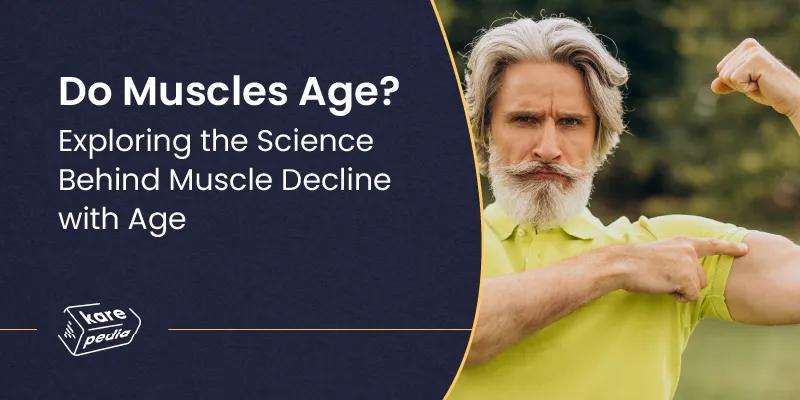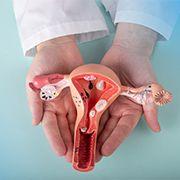Do Muscles Age? Exploring the Science Behind Muscle Decline with Age
In This Article
Do Muscles Age? Exploring the Science Behind Muscle Decline with Age
Prathibha
Updated on December 27, 2024
Medically verified by Dr. Arya
Fact checked by Dr. Fazeela

Wellness
5 min read
Muscles, like the rest of our body, undergo significant changes as we age. These changes are not only inevitable but also affect the way our muscles function, regenerate, and repair themselves. For decades, scientists have studied muscle aging to understand why we lose strength and flexibility over time. Recent findings from Cornell University shed new light on how muscles lose their ability to regenerate as we age.
How Do Muscles Age?
Muscle aging isn't just about the visible loss of muscle mass, known as sarcopenia. It involves a deeper, cellular-level process that impacts muscle regeneration and repair. When we’re younger, muscle repair is efficient, thanks to the activity of muscle stem cells and immune cells. However, as we age, this process becomes less coordinated, leading to slower recovery times and weakened muscles.
The Cornell University Study: A Detailed Look at Muscle Aging
Researchers at Cornell University recently conducted a study using mice as a model to understand how muscle regeneration deteriorates with age. Their findings revealed that 29 distinct cell types play a role in muscle repair, but the behavior of two key groups—immune cells and muscle stem cells—changes with age. The study highlights that, in older mice, immune cells and muscle stem cells fail to communicate effectively, causing a lack of coordination in the repair process.
The failure of these cells to work together efficiently results in delayed muscle repair and regeneration. In younger mice, these cells coordinate seamlessly, allowing for quick and effective muscle recovery after injury or strain. This difference helps explain why older adults experience slower recovery from exercise or injuries, as well as the gradual decline in muscle function over time.
Immune Cells and Muscle Stem Cells: The Key Players
At the cellular level, muscle repair largely depends on muscle stem cells (called satellite cells) that activate to repair and rebuild damaged tissue. Immune cells, particularly macrophages, are also essential in this process as they clear out debris and help stimulate the repair mechanism. In younger individuals, these cells work in harmony. However, as people age, immune cells and stem cells become less effective, and their communication becomes disjointed, impairing the muscle repair process.
The research also suggests that the aging immune system may be more prone to inflammation, which further disrupts the ability of muscle stem cells to function properly. Chronic low-level inflammation, commonly seen in older adults, can interfere with the repair of damaged muscle tissue and slow down regeneration.
What Does This Mean for Aging Adults?
The implications of this study are significant. As we age, our muscles lose their ability to repair themselves as efficiently, leading to weakness, reduced mobility, and increased susceptibility to injury. This can affect our ability to stay active, and it may contribute to the age-related decline in overall physical performance.
However, this discovery offers hope. Researchers believe that understanding these cellular changes could lead to new strategies for improving muscle regeneration in older adults. Possible treatments may include boosting muscle stem cell function, modulating the immune response, or using therapies to reduce inflammation.
 10mint
10mintSexual Health Matters: How To Maintain Your Sexual Health ?
 10mint
10mintYour Guide to Sexual Health Screening and Preventive Measures
 10 mints
10 mintsSTDs in Women: Comprehensive Guide on Symptoms and Treatments
Get a Callback Now
How Can We Counteract Muscle Aging?
While we can’t stop aging, there are ways to mitigate the effects of muscle aging. Staying physically active through regular exercise, particularly strength training, can help maintain muscle mass and strength as we age. Exercise helps stimulate muscle stem cells, and its anti-inflammatory effects may counteract some of the age-related cellular decline.
Additionally, maintaining a balanced diet rich in protein, vitamins, and minerals is essential for muscle health. Nutritional support, such as increasing intake of vitamin D and omega-3 fatty acids, can also aid in muscle maintenance and reduce the risk of injury.
Conclusion
Yes, muscles do age, and they lose their ability to regenerate efficiently over time. However, recent research by Cornell University and other studies continue to provide valuable insights into the aging process. By understanding the role of immune cells and muscle stem cells, we can take steps to preserve muscle health and potentially develop therapies to combat age-related muscle decline.
Staying active, eating a healthy diet, and managing inflammation can all help counteract the effects of muscle aging. While we may not be able to completely stop muscle aging, we can certainly slow it down and maintain our strength and mobility well into older age.
Muscle aging involves slower and less effective muscle regeneration due to disrupted coordination between immune cells and muscle stem cells.
Chronic inflammation and changes in stem cell function contribute to muscle weakness and slower recovery in older adults.
Staying active with strength training and maintaining a healthy diet can help preserve muscle function and reduce the effects of muscle aging.
Ongoing research offers hope for future treatments that could improve muscle regeneration and combat age-related muscle decline.
Source Links
Muscle Repair- new cell database
Scitecdaily- Why Do Muscles age

